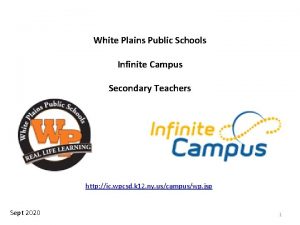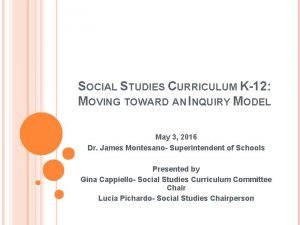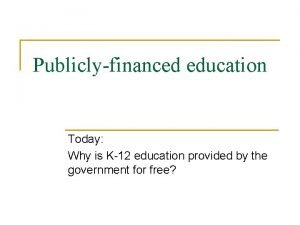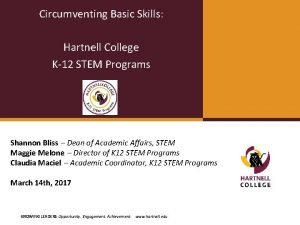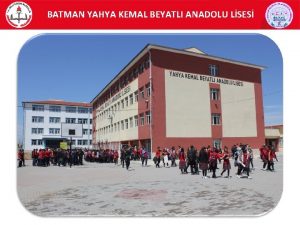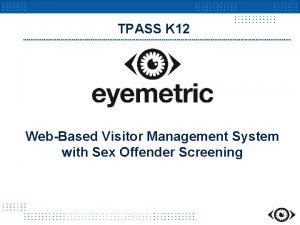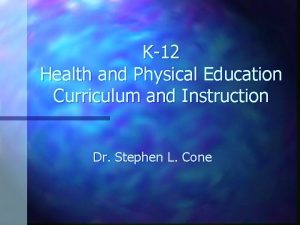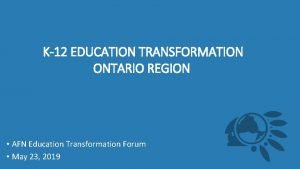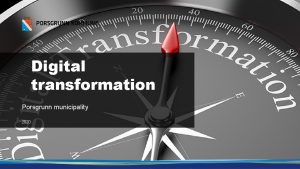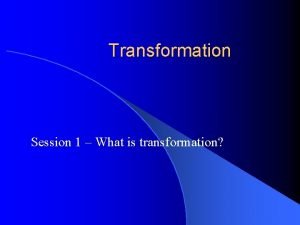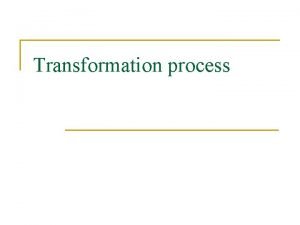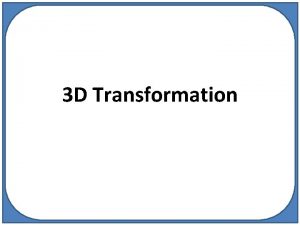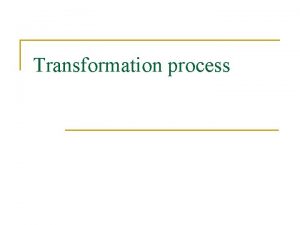Managing Digital Transformation in the Classroom 2017 K12










- Slides: 10

Managing Digital Transformation in the Classroom © 2017 K-12 Blueprint, All Rights Reserved. *Other names and brands may be claimed as the property of others. 1

Digital transformation presents both opportunities and challenges for teachers Opportunities Challenges New ways to engage, teach, assess, and personalize educational experiences New skillset, expectations, and responsibilities 2 www. k 12 blueprint. com

The many responsibilities of the modern teacher • Engaging digital-first students • Personalizing each student’s learning experience • Preparing students for college, career, and life • Aligning learning to rigorous standards • Identifying effective digital learning resources • Delivering 21 st century lessons • Setting students up for success on digital assessments • Analyzing and responding to data • Communicating with stakeholders • Reporting student progress © 2017 K-12 Blueprint, All Rights Reserved. *Other names and brands may be claimed as the property of others. www. k 12 blueprint. com 3

Five steps to managing digital transformation in the classroom 1. Design an active learning environment 2. Establish expectations for students 3. Focus on impact 4. Take gradual steps 5. Identify professional supports © 2017 K-12 Blueprint, All Rights Reserved. *Other names and brands may be claimed as the property of others. www. k 12 blueprint. com 4

Step 1: Design an active learning environment • Plan spaces for all types of student learning: ü Independent work (Caves*) ü Collaborative, small group work (Watering holes*) ü Whole class presentations (Campfires*) ü Authentic learning (Life*) • Infuse appropriate technology—including student and teacher devices and multiple screens for presentation and collaboration—throughout classroom. • Design spaces to facilitate student and teacher communication and collaboration. * Read more about David Thornburg’s Learning Spaces in Campfires in Cyberspace. © 2017 K-12 Blueprint, All Rights Reserved. *Other names and brands may be claimed as the property of others. www. k 12 blueprint. com 5

Step 2: Establish expectations for students • Model, discuss, and reflect on appropriate uses of technology. • Together with students, set clear guidelines for when and how technology should be used for learning. • Share the ISTE Standards for Students to help students reflect on the purpose of classroom technology. • Use resources to teach digital citizenship to students like those available from Common Sense Media and Google. © 2017 K-12 Blueprint, All Rights Reserved. *Other names and brands may be claimed as the property of others. www. k 12 blueprint. com 6

Step 3: Focus on impact • Use models like SAMR, TRUDACOT, and TPACK to determine when, how, and why technology is used. • Reflect on the impact of technology on learning: ü What purpose does the technology accomplish? ü How does the technology align with the pedagogy and content of the lesson? ü In what ways does technology improve the learning experience for teachers and students? ü What does the technology allow teachers and students to do that they weren’t able to do before? ü How does the technology help students develop 21 st century communication, collaboration, critical thinking, and creativity skills? • Identify a common “toolkit” of digital tools and resources to allow teacher and students to become comfortable and efficient. © 2017 K-12 Blueprint, All Rights Reserved. *Other names and brands may be claimed as the property of others. www. k 12 blueprint. com 7

Step 4: Take gradual steps • While change should be transformational, it doesn’t have to be rapid. • Sound pedagogy and content take precedent over technology. • Give teachers and students time to research, introduce, and master digital tools and resources. • Be thoughtful about which tools are adopted and how quickly they are introduced. © 2017 K-12 Blueprint, All Rights Reserved. *Other names and brands may be claimed as the property of others. www. k 12 blueprint. com 8

Step 5: Identify professional supports • Recognize the expertise within your community by finding mentors and role models. • Share questions, challenges, and successes with other educators in your school. • Observe and co-teach lessons to learn from others and establish a learning community focused on transformation. • Expand your professional learning community with online resources like blogging and social media. © 2017 K-12 Blueprint, All Rights Reserved. *Other names and brands may be claimed as the property of others. www. k 12 blueprint. com 9

Resources for teachers • ISTE Standards for Educators, ISTE • National Education Technology Plan, US Department of Ed • Get Active: Reimagining Learning Spaces for Student Success, Dale Basye and Peggy Grant • Mobile Learning Mindset: The Teacher’s Guide to Implementation, Carl Hooker © 2017 K-12 Blueprint, All Rights Reserved. *Other names and brands may be claimed as the property of others. www. k 12 blueprint. com 10

